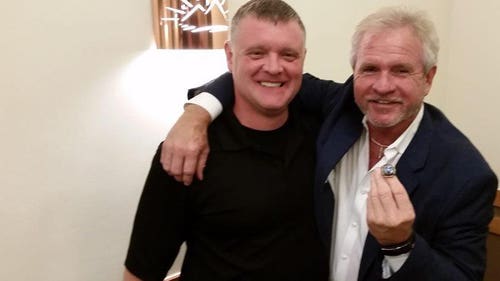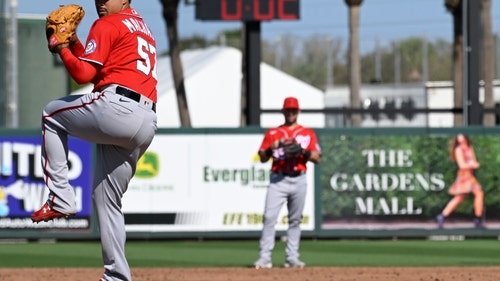
Rays still third-best in the AL East
Pity the Tampa Bay Rays.
They have the good fortune of being perhaps the third-best team in all of baseball. Yet they have the misfortune of being perhaps the third-best team in their division. The consequence is the Rays and their oodles of underdoggy third-bestiness might miss out on the postseason. Such is the injustice of sharing a circuit with the moneyed Yankees and Red Sox. In fact, the Yanks and Sox have failed to occupy the top two spots in the AL East just twice in the past 12 seasons.
Still, keep in mind the Rays are just a season and change removed from a pennant, and they're coming off a campaign in which they won 84 games despite playing a fairly brutal schedule. Moreover, for a number of reasons, Tampa can expect marked improvement in 2010. Here's why they're serious threats to the routines and assumptions of the AL East:
• The Rays are an extraordinarily young team, and in 2010 a number of those young core performers — guys like (deep breath) Evan Longoria, Carl Crawford, B.J. Upton, Ben Zobrist, James Shields, Matt Garza, Jeff Niemann and David Price — are closer to or in their prime seasons. As such, a number of these players can reasonably be expected to take the next step. That they do so is essential to the Rays' hopes in 2010.
• The team defense is exceptional — one of the best in all of baseball. Fielders like Jason Bartlett, Crawford, Longoria, Upton and Carlos Pena range from plus to elite-level. Such a defense can paper over many a pitching weakness.
• Not that the Rays have much in the way of pitching weaknesses. Last season, the Rays were a tick better than average when it came to Fielding Independent Pitching (a metric that, as the name suggests, attempts to remove defense from the pitching calculus), and they should be even better in 2010 for three reasons. One, as mentioned, several pitchers are gravitating toward their prime seasons. Two, Scott Kazmir and Andy Sonnanstine, who in 2009 combined for 210 2/3 innings and an ERA of 6.32, are, respectively, elsewhere and deployed in a less vital role. That's a healthy dose of "addition by subtraction." Third, the offseason addition of Rafael Soriano figures to stabilize the closer's role. Last season in Atlanta, Soriano notched a 2.97 ERA and fanned 102 batters in 75 2/3 innings.
• There's even more help on the way. Besides having the best young talent at the major-league level, the Rays also have an embarrassment of riches in the minors. Top-tier farm talents who are almost ready for the bigs include outfielder Desmond Jennings and right-hander Jeremy Hellickson (and that's not counting Wade Davis, who claimed the fifth starter's job coming out of spring training).
Once the Nats' Stephen Strasburg graduates to the majors (Jason Heyward, of course, is already there), Jennings will become the top prospect in all of baseball. He's ready for a big-league job right now. In terms of potential, Kevin Goldstein, the prospect guru at Baseball Prospectus, wrote Jennings could become "Carl Crawford with outstanding plate discipline." Should Jennings make it to Tampa this season (a likelihood) and take over the right-field job, that will give the Rays — without exaggeration — one of the greatest defensive outfields of all time. (The fly-ball-inclined members of the staff — a group that includes, to varying degrees, Dan Wheeler, Grant Balfour and Garza — certainly won't object to such an arrangement.)
Hellickson, meanwhile, boasts one of the best changeups in the minors, and he has an exceptional moving fastball and solid curve to go with it. There's no reason he can't step in right now should injury or ineffectiveness befall a member of the Tampa rotation. Is Hellickson the best minor-league pitcher not named Strasburg? Quite possibly. And all of this is to say nothing of the many high-ceiling talents the Rays have in the lower rungs of the system.
• Once a couple of key contributors return from injury, the Rays will be even better off. Outfielder Matt Joyce, who should provide good pop from the left side, will be back in less than three weeks, barring setback. Once Joyce returns, he can take over the right-field job, and Zobrist can return to second base. Down the road, once Jennings arrives, Joyce can provide something the Rays need this season — a lefty bat to platoon with Pat Burrell at DH.
Also on the mend is J.P. Howell, the Rays' most effective reliever in 2009. Currently, the lefty is sidelined with a sprained shoulder, but he should be able to return by the middle of May.
• The bench will be a strength. This is will be especially so once Joyce returns and, by extension, pushes Sean Rodriguez into a reserve role. Rodriguez boasts a good bat by bench standards and positional flexibility. Elsewhere, there's Willy Aybar, Reid Brignac and Gabe Kapler — all useful in their roles. As well, the addition of Kelly Shoppach, who's a fairly nifty offensive catcher, means Dioner Navarro becomes one of the top backup catchers around. On the whole, you've got capable pinch hitters, defensive utility and a nice mix in terms of handedness.
But consider that the Rays' payroll is orders of magnitude lower than those of the Yankees and Red Sox. Is it possible for a team to contend under such conditions? Despite what you hear, yes it is. And the Rays will contend in 2010. Whether they claim a playoff berth is another matter, but they will be in the contending fray.
Perhaps they aren't the "on paper" favorites to win the AL East for a second time in three seasons, but at worst they're a step behind New York and Boston. If they barge to the flag, it won't be surprising in the least.
In other words, the Rays should command your respect, not your pity.










